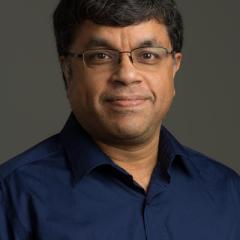Why TOGAF is so influential in enterprise architecture
The Open Group is hosting a global event October 25-27 to celebrate 25 years of "making standards work...together." Since 1996, The Open Group has been helping pave the way for technology innovation throughout the world. Today, it's an 850-member global organization that facilitates advances in technology standards services, certifications, research, and training.
The Open Group is behind many world-class architectural and digital standards, including the Open Agile Architecture (O-AA) Standard, ArchiMate Modeling Language, and many more, and it's the certifying body for the Unix trademark. It developed and manages the notable The Open Group Architecture Framework (TOGAF), the "key industry-standard for enterprise architecture." Over the years, the group has issued more than 110,000 TOGAF certifications to people in 155 countries, making it The Open Group's most-used enterprise architecture framework.
As a community of IT architects and other enterprise architecture contributors, Enable Architect is celebrating TOGAF and its impact on the individuals who design systems that support organizations through times of change and continual innovation.
To honor The Open Group's contributions to enterprise architecture and its practitioners on its 25th anniversary, we asked the organization and some certified TOGAF architects to share what TOGAF means to them and the role it's played in their IT architect career.
Evolving to shifting needs
The Open Group says:
"Given the heritage of TOGAF Standard, it would be easy to see it as something that has held firm while all around it changes. This is, perhaps, an oversimplified perspective, as it misses the many ways in which TOGAF Standard developed and evolved as the needs of enterprise architects shift.
"In recent years, we have witnessed a shift in businesses rolling out digital transformation projects to better exploit a digital-first business model. Typically, this has tended to be piecemeal by individual business units or departments.
"While digital transformation has accelerated the adoption of digital practices, organizations are finding the need to pull these disparate projects together and are turning to TOGAF Standard and enterprise architecture as the most proven and reliable methodology of achieving this. Understanding and managing that big picture of an enterprise has always been at the heart of TOGAF Standard, and it will be exciting to see how practitioners apply it to this next stage of digitalization."
[ Before you embark on your next digital transformation, read Culture matters: The IT executive's guide to building open teams. ]
Realigning problem solving into a common framework
Grant Ecker, VP of global enterprise architecture, Walgreens Boots Alliance (WBA), says:
"TOGAF helped me bridge the gap between what I learned on the job as a technologist early in my career and how architects seek to understand business problems and to deliver business outcomes as professionals. What TOGAF doesn't do is tell you how to do your job: TOGAF doesn't give us a playbook, instead, it realigns the way we solve problems into a common framework, approach, and a language that can be communicated across a team of architects, a practice, an industry, and across our profession.
"TOGAF is like a reference book to refer back to. It proved incredibly valuable to me as I stepped into the methodology as a new architect leader. It started [for me] as an encyclopedia to understand the relevant architecture concepts, which allowed me to engage more seamlessly across the architecture practice and to contribute in line with its principles and expectations. Today, it's helping me as one of many tools we can use to professionalize enterprise architecture within our organizations.
"I use TOGAF the same way it helped me [so that I can] help others. If I notice dissonance in a new architect's engagement across the community, I might encourage them to take TOGAF training or to use some of its concepts to get onto the same page as their peers. It's no longer about my journey of seeking to understand the architecture practice, it's about supporting a community's journey and helping them find their common ground and their common language. When we get stuck as a practice, TOGAF framework is one of those places we can look to get support as an industry-standard approach for solving many architectural challenges."
[ Learn more about Grant Ecker's approach to enterprise architecture design in 5 steps for building collaboration into an enterprise architecture revamp. ]
Providing a holistic approach
E.G. Nadhan, Red Hat chief architect and strategist for North America, says:
"I believe enterprise architecture requires a holistic approach, starting with the business of the enterprise leading to the applications and the information processed. Enterprise architecture is validated by the successful deployment and ongoing sustenance of the solutions that are designed and implemented based on these principles. Doing this at scale requires a consistent baseline framework that can be reapplied with context across a multitude of industries with continuously evolving technology paradigms.
"TOGAF works because it provides a framework to identify and promote validated patterns across an evolving set of customer and industry-specific architectures that are then evolved into deployable solution blueprints.
"What I appreciate most about TOGAF is that it provides a lifecycle approach for advancing enterprise architectural dialog across customers, an ecosystem of partners, as well as internal stakeholders.
"As an advocate of TOGAF for many years, I've contributed to the TOGAF 8 specifications with content in the Business Architecture and Application Architecture phases. I was also first-hand witness to the diverse perspectives brought to bear by The Open Group members when I co-led multiple projects in the SOA Working Group - SOCCI (Service Oriented Cloud Computing Infrastructure) and the Cloud Governance Framework, in addition to presenting TOGAF and applying TOGAF principles at multiple Open Group conferences around the globe in India, Scotland, and the United States."
Happy anniversary to The Open Group
When The Open Group's precursor started developing TOGAF Standard more than 25 years ago, it's unlikely that its members could have predicted its profound influence on enterprise architecture. Enable Architect is proud to honor the organization and its contributions and wishes the organization many more years of success contributing to technology standards.




Marjorie Freeman
Marjorie is the Community Manager for Enable Architect. More about me
Contributors
Navigate the shifting technology landscape. Read An architect's guide to multicloud infrastructure.
OUR BEST CONTENT, DELIVERED TO YOUR INBOX





